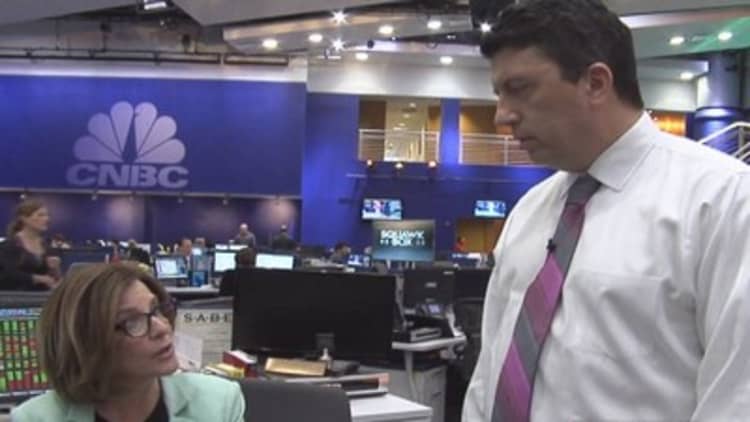The White House and congressional Democrats breathed a collective sigh of relief on Friday as the April jobs report dispelled fears that the economy could be heading into another spring swoon.
You could almost feel the relief flowing out of Labor Secretary Thomas Perez as he got to cheerlead a relatively strong report rather than explain away a weak number as the administration has had to do so often over the last few years.
"I consider 288,000 jobs created to be significant progress," Perez told CNBC. "We are moving in the right direction. You look across the broad range in growth of last month, you look at construction jobs, education and health, professional and business services, these are all middle class and upper middle class jobs."
But Perez also had to contend with the dark side of the report, which showed a big drop in the labor force of 806,000, wiping out the gain of 503,000 in March and driving the participation rate back down to 62.8 percent, a 35-year low.
Read More Hiring springs back! but more gave up looking for work
No one really knows why, exactly, the labor force is now so low.
Some of it is certainly baby boomers retiring. Some may now be workers deciding they can quit their jobs after getting subsidized health insurance under Obamacare.
But whatever the true reason, it is a handy talking point for Republicans to say the jobless rate is only dropping—it plunged to 6.3 percent in April from 6.7 percent—because frustrated workers are leaving the labor force.
And the GOP can also point to other soft aspects of the report as the party makes it case to increase its House majority this fall and pick up the six seats needed to retake the Senate.
Read More Wall Street for Hillary Clinton? Don't rule it out
Average hourly earnings were unchanged at $24.31 and are now up only 1.9 percent over the past year, barely keeping up with inflation. This means workers have little extra money in their pockets to spend and drive overall economic growth.
Stagnant wages will be a huge issue in the midterms with Democrats pushing for a bump in the minimum wage and Republicans arguing for a whole new set of economic policies to boost faster job creation and higher pay.
There is also no way to be sure the strong 288,000 number for April was not mostly catch-up from weaker hiring earlier this year during the frigid winter. The consensus among economists remains that the growth will heat up the rest of the year following the dismal 0.1 percent gain in the first quarter.
But these forecasts depend a great deal on small businesses finally opening up their wallets to replace old equipment and add workers. We have been waiting a long time for that to happen.
The housing market is clearly cooling amid rising mortgage rates. And the frothy stock market gains of 2013 seem to have largely run their course. That means there won't be much of a wealth effect to make consumers feel like spending money.
So the big question will be whether this report ushers in a period of stronger monthly gains closer to 300,000, which would be the best trend since the tepid economic recovery began in 2009. That kind of strong growth could lessen the deeply sour mood across the electorate and reduce the risk Democrats face of losing the Senate.
But there is at least as good a chance that the March number represents the high-water mark.
"The unanswerable question is whether this leap in payrolls reflects a post-winter catch-up or is the start of a sustainable run of stronger gains," Pantheon Macroeconomics' Ian Shepherdson wrote in a note to clients on Friday. "We are inclined to see a bit of both, but what really matters now is what happens in May."
There is also the question of what this report means for the Federal Reserve and interest rates. Clearly the labor market is not yet healthy but the gains seem strong enough to nudge rate hikes earlier rather than later in 2015.

"At the margin it points in that direction," Goldman Sachs chief economist Jan Hatzius told CNBC.
But the Fed question is more important to the 2016 presidential contest than the 2014 midterms. For the rest of this year, the Fed is on course to continue tapering its asset purchases but take no other steps that might tamp down growth and hiring.
Read MoreChart: What's the real unemployment rate?
So Democrats just need to pray that the April number was the really the beginning of a stronger run for the U.S. economy and not just a temporary break from the same old story of slow growth and stagnant wages.
—By Ben White. White is POLITICO's chief economic correspondent and a CNBC contributor. He also authors the daily tip sheet POLITICO Morning Money [politico.com/morningmoney]. Follow him on Twitter @morningmoneyben.


